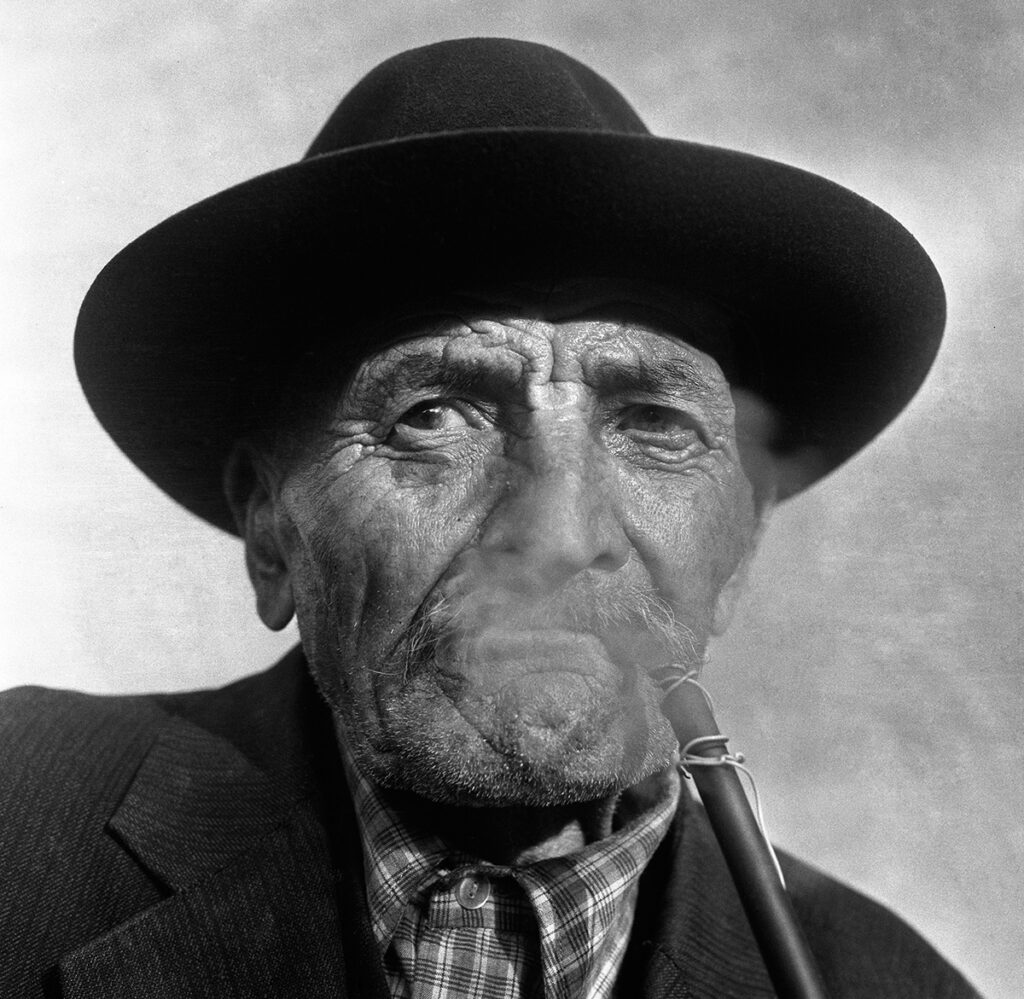Farewell and perspective
Miklós Szabó’s photographs of the peasant life

Can the statement, which at first seems so reversed, be true, that the work creates its creator? This exhibition argues for this path.
Miklós Szabó has been photographing the houses, people, lands and events in Hajdúböszörmény for fifteen years. He works on commission. As an employee of the city council, the cultural center, and the local newspaper. His task and standard are objective authenticity, solid quality and speed. Thousand and thousand of pictures have come out of his hands so far. Thousand and thousand of details of the world of Hajdúság which is so speacial as a whole. We now know that this was Miklós Szabó’s school; the test that the details put before him. He was forced to approach, observe and depict reality line by line. Then, the moments he got to know and as it were inventoried in this way gradually led him to the whole. From to shell to the core from material fidelity to more general truth.
He grew up in his hometown in two directions, on two paths, this deepening acquaintance. It offered the experience and sight of the passing peasant, village environment and the unfolding of the industrial, urban environment. According to its order: the degree of fulfillment was reached first the passing away. To be measured the thousand years peasant life not the ten or hundred year. But this was at the same time a period of trying and rich nature, of gutting and sustaining work, of a harsh and maturing human existence. It is impossible to deal with its decay and passing away simply with the gloomy and practical movements of lowering it into the grave. It requies more and more. A farewell that goes hand in hand with showing historical perspectives and truths.
He can include the farewell decency and this sober perspective in this exhibition photos. That’s how the houses, the objects, the tools, the faces and the moves became historical career evidence and memories. In what way? Through its simple, yet clearer and more emphatic means of highlightning, creating connections and contrasting. As a results of this consideration and aspiration, the old-style farmhouses with clean white walls, human-sized, bearing the traces of the human hand in every aspect, but dilapidated, falling apart, and lifeless, were included in the series. They owned two different type of quality. The emotional attraction and the mental alienation. They themselves indicate and justify that they are on the outside, they have to be the outside of life and history. As a completely hand-crafted, expedient, simple tool which however is already incomplete and broken; in immobility it cannot fulfill its purpose; wich is inevitably buried by weeds and earth. Its former integrity and vitality are only glimpsed here and there by the stancy, disfigured completely embarrassed. The pictures that speak most directly are those that capture wrinkled, old, tired faces and hands. Here the internal quality that arouses identifiction and aversion is almost perceptibly fighting with each other. These features bear the traces of constant coexistence with the elemental material world: the earth, the wind, the sun, the fire, the frost. The marks engraved on them by contiuous and hard work and conquest. At the same time, they take on rawness, angularity and distortion so many thick signs of rudimentaryness. In other words: they express the state of a person when he succumbed to external constraints, when he could hardly exercise his own good potential. When he was formed, he did not form. Although this radiates strenght, greatness and a certain beauty, it stems from vulnerability, submission, the lack of human freedom. Therefore, he wishes and urges self-transcendence. The achievement of a state in which person is the master of this world rather than a slave. And from here, from this, the features of his inner and outer image grow.
Of course all this can only be conveyed by the extraordinary richness and concreteness of the deatils, as well as the definite expression of the proportions, relationship and relations. The originality and value of Miklós Szabó’s representational power lies precisely in the lucky combination of these.
Székelyhidi Ágoston
Hajdú-Bihari Napló 1976. március 2.

